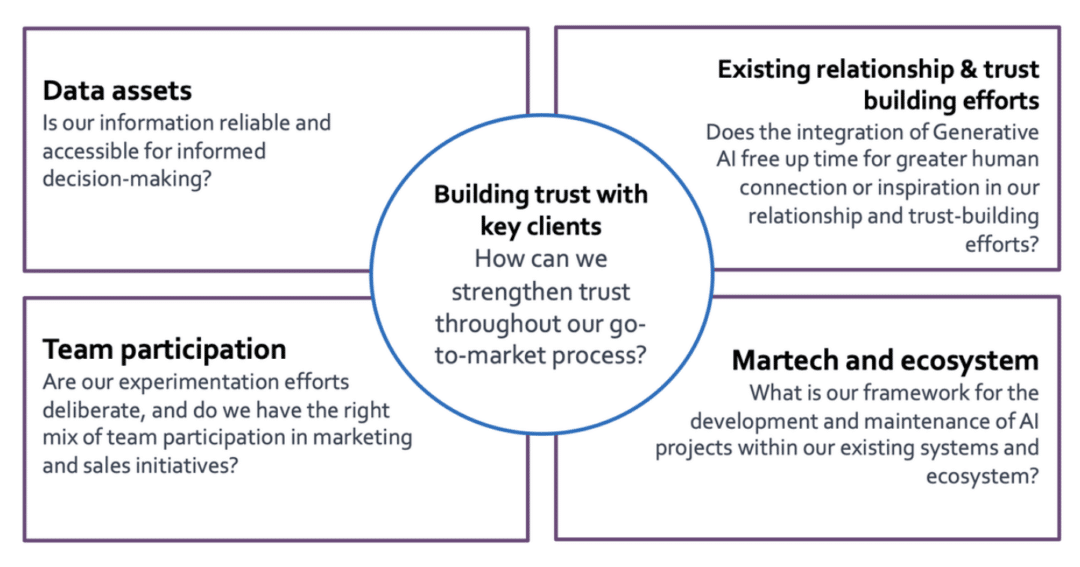The attendees had a mixed response to these questions. Several, particularly those from law firms, had set out a charter for the use of AI – a document that articulates what it should and should not be used for. Clearly, professional services firms need to be exemplary with regards to security and confidentiality, and most were. Their biggest challenge, however, was to marry the required technical compliance with the desire to experiment. Many had overcome this by using a private instance of AI in a closed space.
Many professional services firms have been using AI for client work for many years. For instance, to save time on drafting contracts. Paradoxically, this is inherently riskier than using it for marketing and business development purposes. Therefore, we need to change the internal mindset to convey that AI is not there just to improve our core services. It can also drive operational efficiency across the firm.
But attendees believed that there were fewer genuine examples in the sales and marketing realm. None had the ability to use AI to collate all the proof points and examples a partner might need for a conversation with a particular client. Most were still struggling with requests to give them a clear definition, write a paragraph, and embellish a few key points in an email. That is fun but is scratching the surface.
Maybe using the term ‘generative AI’ isn’t that useful and we need different semantics. With generative AI we automatically think about typing a question into a box and getting an answer back. If we were to use a phrase like large language model (LLM) maybe that will surface different and more valuable conversations, exploring automating processes, demonstrating what good looks like, and teaching us about success.
The ultimate goal for our group, however, was to use AI to enable better relationships between partner and client. We ended the conversation with another question. If AI is all about building a better relationship, is it about saving time on the daily workload, which the partners can spend on the relationship or giving them better relationship-building tools? We’ll explore this in our next article.





